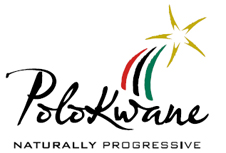Demographics and Language
10% of the Limpopo’s population makes their homes in Polokwane. The vast majority of the Province is very rural so it is not surprising that the city’s capital has the highest settlement density. In six years the capitals household numbers have increased from nearly 125 000 homes to just over 130 000. The Municipality has had to plan and provide for an increase of over 5380 households and with the continued growth of the city, constant planning and restructuring of services is an on going exercise.
The black population in the city is approximately 94% the municipal residents. The white population accounts for almost 5% and the coloureds and Indians just over 1% of municipal residency. As the country and its cities, including Polokwane, emphasis is put on upliftment and social renewal and focuses mainly on the black population which is considered the area that needs it most.
Culturally and ethnically diverse the cultural mix of the city is a fascinating one. Six of the eleven official South African languages can be heard in the streets, namely Sepedi, Xitsonga, TshiVenda, IsiNdebele and English and Afrikaans.
Polokwane is a proud city which boasts of a rich sporting culture, a fascinating history, surroundings of natural beauty and an ecclectic mix of arts and cultures. Good governance, a sound infrastructure, a fast growing economy and spectacular tourist attractions are the foundations on which the city is building its growth.
For the past five years the city has boasted an average growth rate of 1-4% per annum. In some sectors, like commerce, growth has been as as high as 9%, and the continued growth represents the sustainability and growth of a city growing. This is directly attributable to the widespread economic base of the city.
A city united,
Polokwane – Proudly Progressive.
